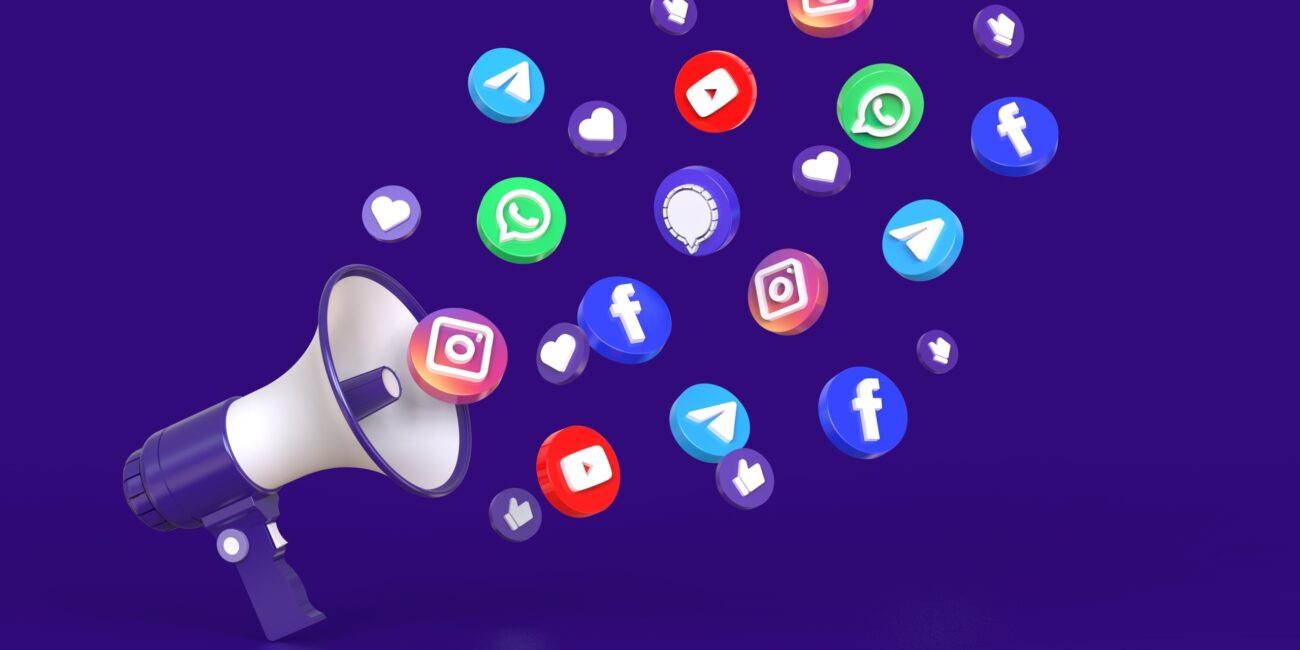Social media platforms have gained increasing share within brands’ media mixes for their unique ability to reach diverse, highly engaged audiences. By the end of 2024, advertisers are expected to spend $219.8 billion on social media, making up more than a third of all digital investments. This will likely grow as new social platforms, ad formats, and interactive content emerge regularly.
Harnessing the value of social media advertising requires a heavy hand. Marketers need to understand the nuances of each platform — audiences, content formats, and trends. They also need to keep a close pulse on how the social landscape evolves to ensure content remains relevant and reaches the right people at the right time.
In this article, we detail everything marketers need to know about social media paid advertising to create content that resonates with audiences across various platforms and maximizes a campaign’s return on investment (ROI).

What are the benefits of social media paid advertising?
Social media advertising has proven successful in driving results for marketers across industries. According to eMarketer, 35% of consumers are receptive to ads on social media, positioning these platforms in second place alongside news sites (a tie at 35%) and shopping sites (36%). What makes social media powerful enough to rank so high? These platforms offer unique benefits that other mediums don’t, such as:
- Audience targeting. Each social media platform has vast user bases that allow advertisers to target specific demographics, interests, behaviors, and life events. This precise targeting ensures that content reaches the most relevant audience at the best possible time, increasing the likelihood of engagement and conversion.
- Experimentation. Social media is dynamic and allows brands to try new concepts to see what content sticks with audiences. Marketers should approach the social landscape as a playground to gauge content success and iterate accordingly.
- Direct interaction. By nature, social media fosters an open dialogue between brands and customers. Not only does social advertising ensure your content directly reaches prospects, but it also encourages conversations around your brand that lead to helpful feedback. Of course, this must be closely monitored. Brands that remain attentive and responsive are usually the ones that reap the most benefits.
- Full-funnel results. Traditionally, social media has been considered a prime channel for building a brand presence. Recently, however, many platforms have taken steps to facilitate the path-to-purchase options that offer innovative ad formats. Now, social media marketers can see full-funnel impacts with advertising investments.
- Strong measurement. Social media platforms provide robust analytics for advertisers to measure real-time campaign performance. Tracking key metrics, which are dependent on your campaign goals, allows marketers to optimize campaigns for better results and deliver more significant ROI.
Social Media Advertising Platforms
Ads performing well on one platform might not perform so well on another. It’s important to understand the audience on each platform and create content specifically for them. What follows is a detailed overview of the social media platforms for paid advertising, including monthly active users and key audience demographics.
Despite the emergence of many new social media platforms, Meta’s Facebook remains one of the most influential platforms for social advertising. As the most used social media platform worldwide, it offers diverse ad formats — images, videos, and carousels, among other options — to deliver on various marketing objectives across the funnels.
Facebook attracts a broad audience, so it’s safe to assume your customers are accessible through the platform. With robust advertising tools, marketers can granularly target users based on demographics, interests, and behaviors. Advertisers can create custom and lookalike audiences, and its detailed interest targeting allows businesses to reach users based on hobbies and recent life events.
Monthly Active Users: 3 billion
Most Engaged Users:
- Age Bracket: 30-49
- Gender: Mostly females
Also owned by Meta, Instagram is a visual-first platform that contrasts Facebook. It offers marketers the opportunity to showcase products and services through compelling photos and videos, with a keen focus on influencer marketing. Advertisers can seamlessly incorporate products into the scrolling feed, making it ideal for the fashion, beauty, travel, and lifestyle industries.
Instagram also offers a range of ad formats, including in-feed content, Explore content, sponsored stories, and more. The platform’s integration with Meta’s Business Suite enables seamless targeting and campaign management. Its targeting capabilities are similar to that of Facebook, but its focus on visual content places additional importance on advertising creativity.
Monthly Active Users: 2 billion
Most Engaged Users:
- Age Bracket: 18-29
- Gender: Mostly females
YouTube
YouTube is the largest video-sharing social platform. While it gained prominence with longer-form video, the platform launched a rival to TikTok and Instagram’s short-form content called YouTube Shorts in 2020. In addition to short-form video ads, YouTube offers a variety of skippable and non-skippable advertising formats, including bumper ads and sponsored cards.
YouTube advertisers can target based on demographics, interests, keywords, and placements. The platform also offers unique targeting abilities based on viewing behaviors and subscriptions. Because Google owns YouTube, it seamlessly integrates with Google Ads for more advanced targeting capabilities, including remarketing and custom intent audiences.
Monthly Active Users: 2.5 billion
Most Engaged Users:
- Age Bracket: 18-49
- Gender: Male and female
TikTok
TikTok is a relatively new social media platform for advertisers, though it is rapidly gaining popularity. It’s known for its short-form video and ability to make content go viral, especially with younger audiences. Brands can leverage a range of ad formats — in-feed ads, branded hashtags, branded effects, TikTok Shop ads — to promote content and products.
TikTok has emerged as a search engine in its own right, as consumers now leverage the platform to discover new people, products, brands, recipes, and more. TikTok’s audience is highly engaged and drawn to creative, entertaining, and trendy content. Advertisers on TikTok can target based on demographics, interests, and devices, spanning both custom and lookalike audiences. It’s highly effective at aligning content with engagement patterns, so interactive content and campaigns are particularly effective.
Monthly Active Users: 1.2 billion
Most Engaged Users:
- Age Bracket: 18-29
- Gender: Mostly females
X (formerly Twitter)
X is the primary social media platform for short-form content and microblogging. It has undergone significant change over the last two years under new leadership but remains a platform for news, real-time updates, and public conversations on current events. X offers various ad formats, including promoted tweets, accounts, and trends.
Marketers can use this platform to target based on demographics, interests, behaviors, keywords, and follower targeting. They can also target users based on specific events or conversations on the platform, making it easy to capitalize on live events, trending topics, or time-sensitive promotions.
Monthly Active Users: 541 million
Most Engaged Users:
- Age Bracket: 18-29
- Gender: Mostly males

Snapchat
While Snapchat grew in prominence with younger audiences for its temporary content, it has since become a hub for interactive content. The platform has invested in emerging trends, such as short-form news, augmented reality (AR), and creative tools, to maintain its digitally native audience. Snapchat offers various ad formats for brands unique to the platform, including snap ads, story ads, lenses, and filters.
On this platform, advertisers can target based on demographics, interests, behaviors, and location, supporting custom and lookalike audiences. Snapchat’s newer AR capabilities also empower brands to create interactive and immersive experiences. Lenses and filters, for example, allow brands to integrate their products seamlessly into users’ content.
Monthly Active Users: 750 million
Most Engaged Users:
- Age Bracket: 18-29
- Gender: Male and female
A visual discovery platform, Pinterest is known for facilitating inspiration and planning, which makes it an ideal platform for lifestyle, home decor, fashion, and food brands. Users can develop pinboards that feature content from across the ecosystem, creating profile pages where content is widely shared and referenced as a trusted source.
Pinterest advertisers can leverage content formats such as promoted pins, promoted video pins, and shopping ads, which seamlessly integrate into the pinning experience. Pinterest targeting includes demographics, interests, keywords, and customer lists. It also enables keyword targeting, which allows advertisers to reach users based on specific search queries.
Monthly Active Users: 465 million
Most Engaged Users:
- Age Bracket: 18-49
- Gender: Mostly female
LinkedIn is the primary social media platform for B2B marketing. It provides unique ad formats — including sponsored content, text ads, and InMail messages — targeted to business decision-makers, professionals, and job seekers. LinkedIn’s user base includes people from various industries, including technology, finance, healthcare, and education.
Intended for professional networking, this social media platform is particularly popular among working-age consumers. Brands advertising on LinkedIn can easily target audiences in specific industries, job titles, qualifications, and company sizes due to its focus on business professionals. Sponsored InMail also allows for more personalized messaging, making it an effective tool for lead generation and direct engagement.
Monthly Active Users: 350 million
Most Engaged Users:
- Age Bracket: 30-49
- Gender: Male and female
J&L Marketing has proven experience in social media paid advertising
As one of our primary services, J&L Marketing offers deep expertise in social media advertising. We can help you identify and understand social media advertising opportunities and also develop precision-targeted ads that are guaranteed to meet your brand’s goals without the high price tag of other agencies.
Our average cost per click is over 500% better than Facebook’s overall average and 746% better than the automotive market. Click here to learn more about how our precision-targeted social ads deliver results without the high price tag. Contact us today to get started on your paid social strategy.



